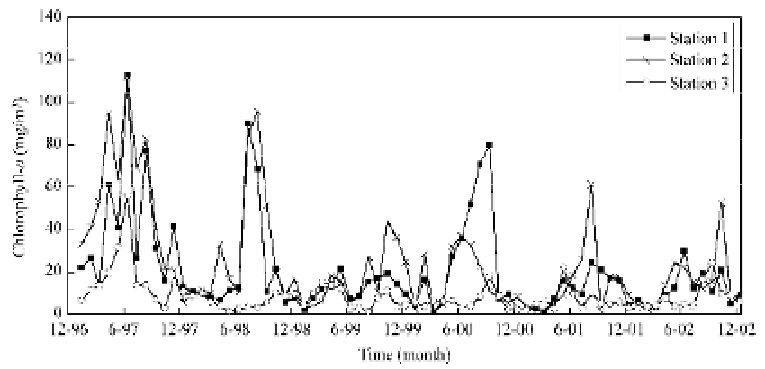Environmental Engineering Reference
In-Depth Information
Fig. 8.37
Topographic overview of Taihu Lake (depth contour in MSL) (Mao, 2005)
Phosphorous is the limiting nutrient for Taihu Lake's eutrophication. Records show that Taihu Lake was
oligotrophic as recently as the 1950s and 1960s, with chlorophyll-
a
concentrations of about 2 mg/m
3
and
total phosphorus (TP) of about 10 mg/m
3
(Chen et al., 2003). However, since the late 1980s, the water quality
of this lake has severely deteriorated and algal blooms have become a frequent nuisance. These blooms,
which generally occurred in the summer and early fall, were considered to be the result of a combination of
high nutrient loads and lengthened hydraulic retention times. Figure 8.38 shows the temporal variation of
observed chlorophyll-
a
concentration at three representative sampling stations (see Fig. 8.37)—Station 1
near Xiaowanli water plant in the north, Station 2 near Gonghu water plant in the northeast, and Station 3
in the middle of the lake. It can be seen that from 1997 to 2002 the chlorophyll-
a
concentrations at these
stations frequently exceeded 10-20 mg/m
3
, with maximum values in excess of 100 mg/m
3
.
Fig. 8.38
Observed chlorophyll-
a
concentration at three sampling stations in Taihu Lake during 1997-2002 (Mao, 2005)










Search WWH ::

Custom Search